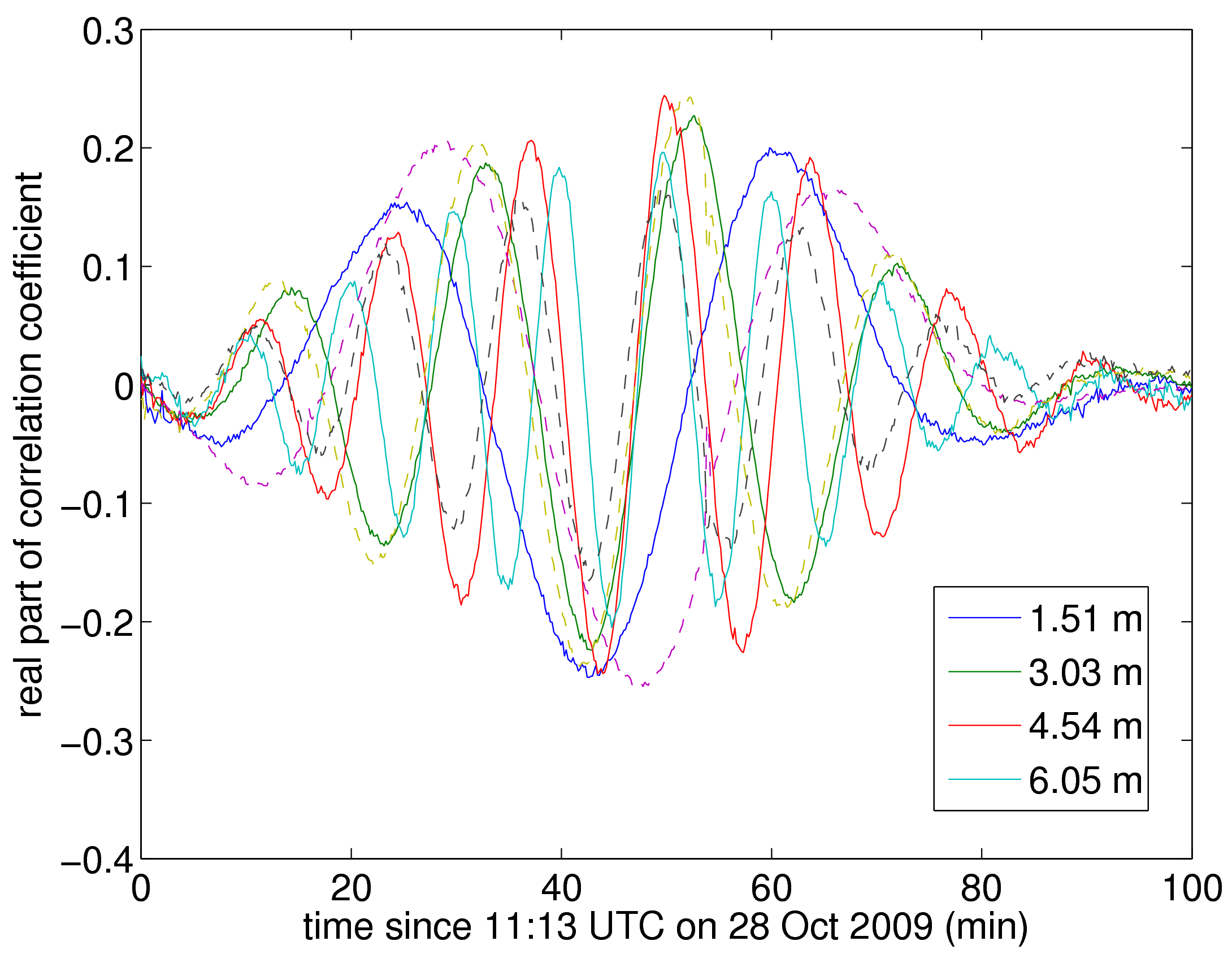Daily Image
09-11-2009First fringes of EMBRACE
| Submitter: | Stefan Wijnholds on behalf of the EMBRACE team |
| Description: | On October 28, 2009, ten EMBRACE tiles at the WSRT site were hooked up to a LOFAR type digital backend. These ten tiles were arranged on two parallel East-West lines to form two uniform linear arrays of four and six tiles respectively with 1.51 meter spacing. Just before lunch, the system was properly initialized to start an observation in which we let the sun drift through the main beam of the tiles. The correlator was set to take 10 s snapshots in a 195 kHz band near 1179 MHz. The plot shows the observed fringes on several East-West baselines. The dashed and solid curves indicate results from the 4- and 6-element array respectively. The width of the envelope corresponds nicely to the expected half power beam width of an EMBRACE tile. The amplitude of the fringes gives an indication of the instantaneous SNR of the sun. This can be used to estimate A/T, a key performance parameter for radio telescope. A preliminary analysis indicates that the system temperature in bore sight is close to 100 Kelvin, the value for which the system was designed. There are many redundant baselines in this setup. We verified that these baselines show the same phase and amplitude response. This is very reassuring from an array calibration perspective and indicates that mutual coupling and edge effects have only limited impact. This is all very good news. The fact that we were successful on our first attempt to correlate multiple tiles makes it even more impressive. This observation is a focal point at which the efforts of many people have come together, including of course the efforts of our international SKADS partners at the Observatoire de Paris, MPIfR and INAF-IRA. It also forms a stimulating starting point for the next episode in aperture array development for the SKA. AAVP. |
| Copyright: | ASTRON |
| Tweet |  |
